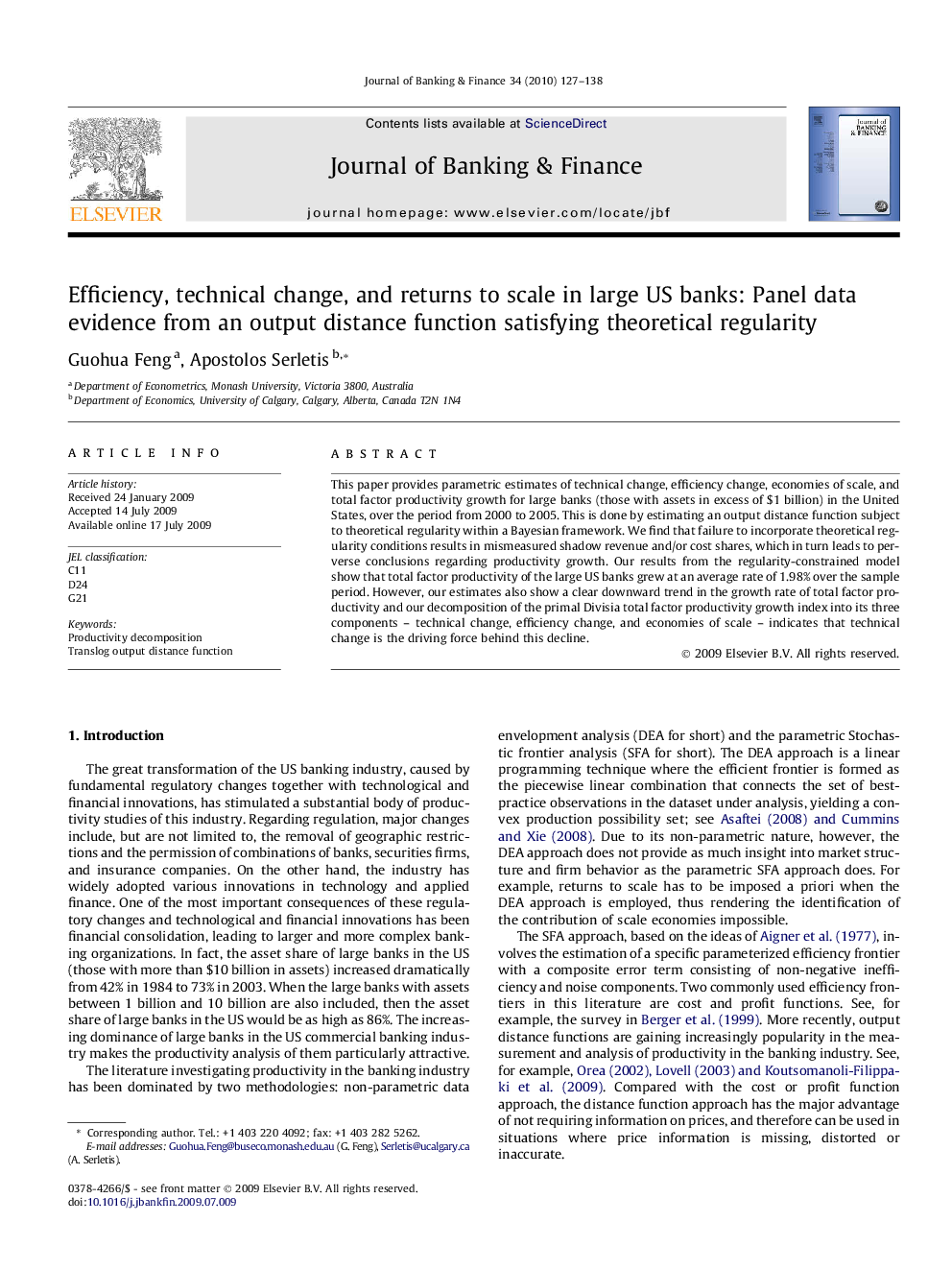| Article ID | Journal | Published Year | Pages | File Type |
|---|---|---|---|---|
| 5091058 | Journal of Banking & Finance | 2010 | 12 Pages |
This paper provides parametric estimates of technical change, efficiency change, economies of scale, and total factor productivity growth for large banks (those with assets in excess of $1 billion) in the United States, over the period from 2000 to 2005. This is done by estimating an output distance function subject to theoretical regularity within a Bayesian framework. We find that failure to incorporate theoretical regularity conditions results in mismeasured shadow revenue and/or cost shares, which in turn leads to perverse conclusions regarding productivity growth. Our results from the regularity-constrained model show that total factor productivity of the large US banks grew at an average rate of 1.98% over the sample period. However, our estimates also show a clear downward trend in the growth rate of total factor productivity and our decomposition of the primal Divisia total factor productivity growth index into its three components - technical change, efficiency change, and economies of scale - indicates that technical change is the driving force behind this decline.
